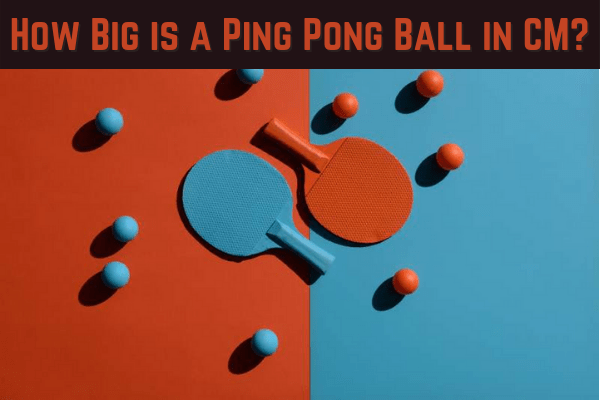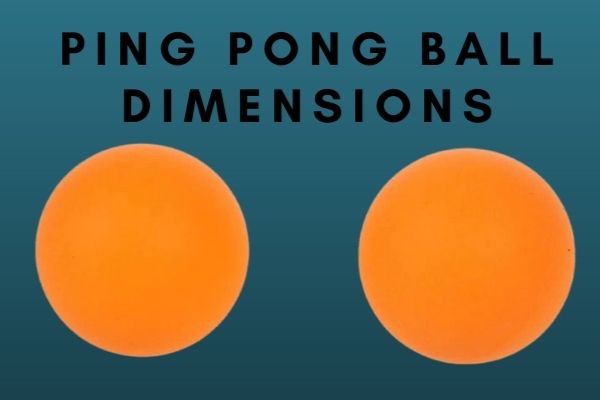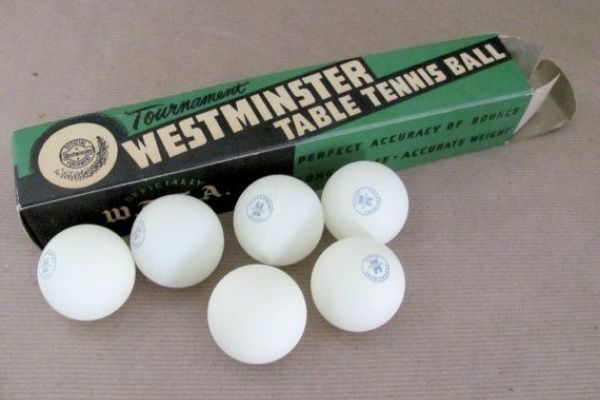Ping pong balls are a popular toy and game to play with. They come in many different sizes and colors, but what size is the average ping pong ball? This blog post will answer that question as well as tell you how big a ping pong ball is in centimeters.
Ping Pong Balls: What Size Are They? Ping-pong balls come in all sorts of shapes and sizes, from the tiny plastic ones for use on miniature tables to those huge white bouncy ones used on public courts. But what size does an “average” one measure up to? The standard size for most table tennis equipment is 40mm (1 1/4 inches) or 2 3/8 inches (6 cm).

Contents
How Big Is a Ping Pong Ball?
The average ping pong ball’s diameter is 38mm or 1.5 inches, which is approximately the size of a large marble. A ping pong ball weighs about 2 grams, so it would take over 400 to weigh one pound! It has atmospheric pressure pushing down on it at all times because it floats freely in the air. The density of a ping pong ball is about 0.07 grams per cubic cm (0.00004 ounces per cubic inch) so the number of balls you would need to equal one pound would be about 28 trillion.
Related Guide: Which Side of the Ping Pong Paddle to Use?
Size of a Ping Pong Table Tennis ball
The standard size for most table tennis equipment is 40mm or 2 3/8 inches (6 cm). This relates to international standards which have been used in the sport for decades—the only change made was to the thickness of the ball, which is now 2.7 mm rather than 2.3 mm.
Are There Different Sizes of Ping Pong Balls?

There are a few different sizes available on the market. One of the most common is a 2 1/2 inch table tennis ball, which is smaller than an American Ping Pong ball but larger than a European-sized one.
Size of ping pong balls used in official table tennis tournament play: – diameter 40mm +/- 0.5mm – weight 2.7 +/- 0.1g – bounce height 40mm +/- 1mm In centimeters, the official table tennis ball is 6cm wide and bounces to a height of 4.8cm on a flat surface after being dropped from a height of 30cm.
Ping-pong balls are used in all types of table tennis games. They also have many other applications, but they’re most often seen in games of table tennis. A ping pong ball is a hollow, hard-sphere with a seam around the circumference. It’s typically white or orange and has a diameter of 40 millimeters.
In centimeters, it’s 6 centimeters wide and bounces to a height of 4.8 centimeters on a flat surface after being dropped from a height of 30 centimeters. A ping pong ball is a hollow, hard-sphere with a seam around the circumference. It’s typically white or orange and has a diameter of 40 millimeters.

Are Ping Pong Balls Hollow?
Yes, Ping Pong balls are hollow with a circumference seam. The circumference is almost always 40 millimeters. This is the standard size for competition. There is also a 35 mm diameter ball used for training purposes or by younger children, but it’s not allowed in official competitions due to its different bounce characteristics when compared to the 40mm ball.
The 40mm ball is hollow but not completely empty. It’s filled with a specific amount of pressurized air so that it has the correct weight and bounce properties when dropped from a height of 30 centimeters. It doesn’t matter if you drop it straight down or bounce it off the floor, the result should be the same because gravity applies in both cases.
The ball is not only used in competitive ping pong, but also in other sports such as tennis and volleyball because it’s the standard size for all of them. The diameters are also very similar to a baseball and a bunch of other balls so you can use this one almost everywhere without any problems.
A professional ball is 40 millimeters in width and weighs 2.7 grams, or 5.95 cubic centimeters when filled with air. As you can see the outside diameter is bigger than that of a tennis ball which means that it bounces better, but it has less weight inside so players are able to handle it without too many problems.
